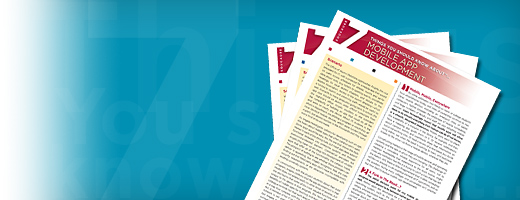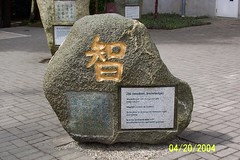Seven Things You Should Know
 7 Things You Should Know... is a series of free, downloadable documents from the Educause Learning Initiative that explain the basics of new educational technologies.
7 Things You Should Know... is a series of free, downloadable documents from the Educause Learning Initiative that explain the basics of new educational technologies.
Each brief focuses on a single practice or technology and describes what it is, where it is going, and why it matters to teaching and learning. They are a good, quick overview of a topic. Good for workshops and staff development.
Well, some may argue with the term "educational technologies" when the documents cover topics like Facebook, or YouTube. Actually, that's something I like about the series - that they are addressing things like social bookmarking with the attitude that these technologies need to be examined by educators in order to see if there is educational value.
One topic is RSS. That is a protocol that lets users subscribe to online content using a "reader" or "aggregator." Helping students and other teachers find good "educational" content - podcasts, blogs, news pages - and then teaching them how to subscribe is educational. No doubt about it.
Your students don't watch the news on TV? Subscribe to one. Download the Democracy Player (the free and open source Internet TV platform) and get the NBC Nightly News each day to use. There's plenty of educational & not educational content there. Just as there is on YouTube and other places. Go to iTunes and search on NBC News and from their Time Capsule series. You could download for $1.99 an hourlong program on the fall of Saigon from April 1975 for that unit on Vietnam in U.S. History II. Teach students how to make choices and how to search for the right stuff.
Wikipedia is a free online encyclopedia anyone can add to or edit. It's very popular with students. Too popular, say a lot of teachers. It has become the first, the primary research tool of students in K-12 and in colleges. Wikipedia has some problems - entries don't undergo verified expert review & what's there today might be gone tomorrow - so many academics are concerned about its use for academic purposes.
But you can't just ignore it. A teacher told me recently in a confident voice. "I simply do not allow my students to use it." Is he monitoring them at home & in the library? Seriously, they ARE using it. They're just not listing it in their sources. The same way students 30 years ago used World Book Encyclopedia even though the teacher said it was unacceptable in their bibliography. Teachers said read Great Expectations not the Cliff Notes. Did that work? I used to bring in copies of Cliff & Monarch notes when I taught books and talked about them, and certainly tried to make sure my quizzes, essays and assignments couldn't be answered by a quick check in them.
Get real. Teach Wikpedia. Teach what it's good for and where it doesn't meet the mark. That's what good teachers do.
Tell them about Creative Commons. It is an alternative to traditional copyright, developed by a nonprofit organization of the same name. By default, most original works are protected by copyright, which confers specific rights regarding use and distribution. Creative Commons allows copyright owners to release some of those rights while retaining others, with the goal of increasing access to and sharing of intellectual property.
Show students how to use a Creative Commons image from Flickr & how to cite it. Use Creative Commons materials in class and be sure to model the citation and usage.
The 7 Things series covers YouTube, grid computing, open journaling, clickers, Facebook (2 entries), social bookmarking, Google jockeying, Google Earth, eBooks, podcasting and more are always being added. The list of topics in the series is in itself a good list of things teachers need to know.

Comments
No comments